All staff and the host family are fully vaccinated (2 doses of COVISHIELD) as of 3-Aug-2021.
All posts by Preetam Reddy
Loki’s 3 day Foodie Retreat – Oct 2019
Join Loki (MasterChef Australia 2018 contestant) and other passionate foodies, cooks, culinary enthusiasts on this exclusive Foodies’ Retreat at the Binsar Forest Retreat, Binsar, Uttarkhand. Imagine an immersive retreat where you go totally OFF THE GRID (literally and metaphorically) and RECONNECT, REPAIR and REJUVENATE your relationship with FOOD! If you care about sustainable food, vegetarian / plant based eating, healthy yet tasty cooking, Indian flavours, locally sourced ingredients and Time to WANDER and PONDER, THEN THIS ONE IS JUST FOR YOU!
This Retreat is going to bring like minded foodies together and consist of food & creative workshops, Masterclasses, Private classes, local food tours, recipes, cooking sessions, feasts and total CELEBRATION of food and how it connects all of us. All this activity and “CHILLAXING” with Loki surrounded by the gorgeous Himalayas amidst one of the best forest reserves and retreats India has to offer. So come join us on this amazing food journey.
A typical day at the retreat would consist of the following (indicative only). The 3 day schedule will be provided prior to the retreat.
- Morning Tea / Coffee
- Yoga and Meditation – not guided by a practitioner (self led)
- Breakfast – Group discussion about the day’s program
- Nature Walk
- Lunch
- Group workshop – on specific thematics
- Tea
- 1:1 meetings with Loki (free time for those who are not booked that day)
- Cooking Masterclass
- Dinner
- Bonfire/gratitude and closing
All inclusive Price: ₹25,000 / person
Note: Rooms will be on twin sharing basis. If you want a room for yourself: ₹30,000
Dates:
11-Oct-2019 to 14-Oct-2019
17-Oct-2019 to 20-Oct-2019
Contact:
WhatsApp: +61 451 959 252
Mobile: +91 99020 12405
Email: loki@trusttheloki.com / info@binsarforestretreat.com
Monsoons in the Hills
Monsoons in the Himalayas are magical. This photograph is from my first monsoon in Binsar (2014). A ceiling of clouds all the way to the horizon, thick fog rising up from the moist forest floor and a narrow band of clear view into the distance to remind you that you are in the Himalayas. One can easily forget – we have only briefly seen the rolling hills in the past few weeks and are yet to sight the higher Himalayas.
As I look out the window, I can barely see past the periphery of the Retreat. It is foggy and raining. To be sure, the sun has been making appearances; peeping out from behind the clouds every now and then. In minutes, however, the fog rolls in and the air becomes wet, cold and opaque.
The Colour of Rice
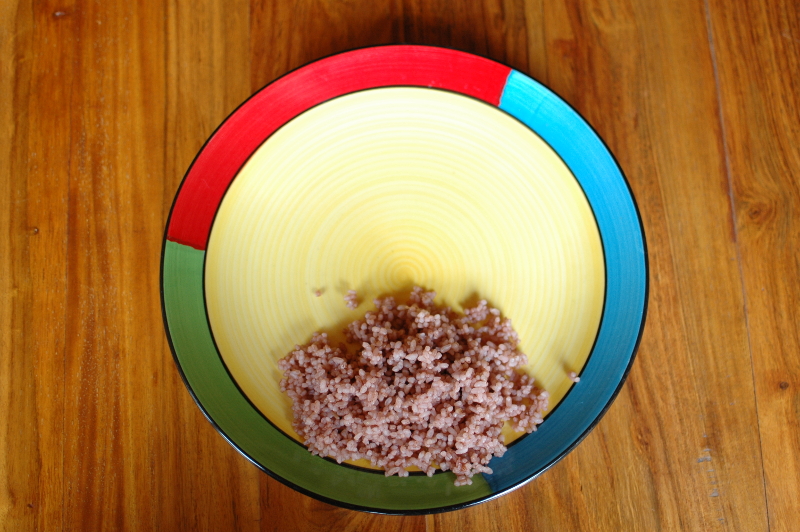
Rice comes in many colours – white, brown, red, golden, even black. What is the difference? Which rice is better?
As part of our effort to put healthy food on the plate (for our guests as well as ourselves), here is what we understood of the rice we eat:
Coloured rice is a whole grain rice, while white rice is what remains of the whole grain rice after removing bran and germ – integral parts of the whole grain rice. White rice is nutritionally deficient compared to whole grain rice. It is rich in carbohydrates with a little bit of protein, while whole grain rice, in addition to carbohydrates and protein, is also rich in fibre, iron, vitamin B and omega 3 / 6 lipids. If whole grain rice has more nutritional value, why is rice refined at all?
We started at the beginning.
Rice grain has a protective outer shell, called husk (or chaff / hull). Husk is not a part of the grain itself and is inedible.
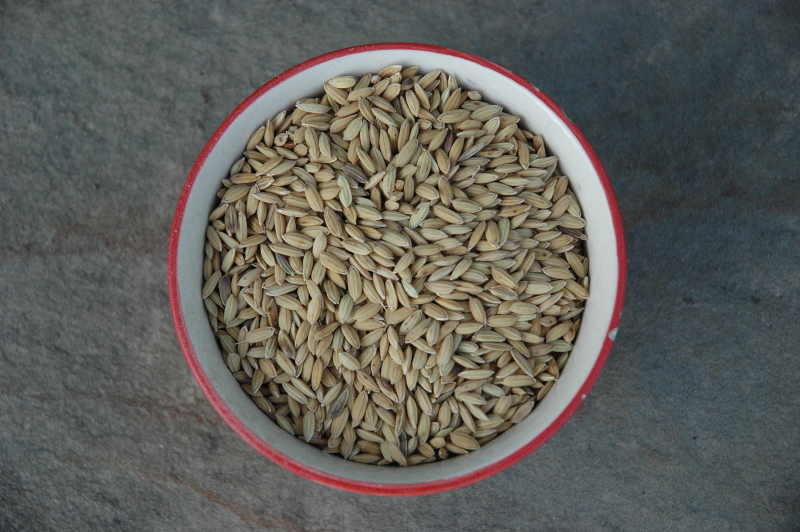
Husk has to be removed before rice can be consumed as food. However, unrefrigerated de-husked whole grain rice becomes rancid when stored beyond six months. To understand why this happens, we had to understand the constitution of whole grain rice:
- Bran – the hard outer layer, whose pigmentation determines the colour of the rice – brown, red, black
- Germ – the embryo or the reproductive part that germinates and grows into a new plant
- Endosperm – tissue produced inside the seeds that surrounds the embryo and provides nutrition in the form of starch
Rancidity is caused by the oxidation of fats and oils when the whole grain is exposed to air, light or moisture. Bran is rich in oils and germ is rich in fats, while endosperm is poor in both. In order to increase the shelf life of rice, both bran and germ are removed by milling the whole grain rice, leaving only the endosperm. The result is refined rice or white rice, which is nutrient-depleted since endosperm is primarily carbohydrates with a little bit of protein. Bran and germ, on the other hand, are rich in protein, fibre, iron, vitamin B and omega 3 / 6 lipids in addition to carbohydrates.
Conclusion: whole grain rice or coloured rice is highly nutritious but has a short shelf life – of about 6 months when unrefrigerated. White rice increases the shelf life to about 4 – 5 years, but at the expense of nutrients.
Here is what we now do:
We buy rice from a farming community in a village called Garur, in the Gomati river valley of Bageshwar district, north of Almora. The farmers don’t use chemicals so the rice is completely organic. We buy our full year quota of rice – brown and red rice – in October / November when the yearly rice crop is harvested.
We buy rice grains with the husk intact. Husk prevents the rice grains from coming into contact with air, light and moisture, protecting the grain from becoming rancid.
We dehusk the rice grains periodically based on demand. Just-in-time dehusking ensures that the whole grain rice isn’t on the shelf for more than a month. So we consume the rice much before it can become rancid.
We use the traditional way of dehusking rice – by hand pounding the rice in a mortar, locally called Okhal, followed by wind winnowing. Okhal is a large stone that has a depression cut in. The pestle used for pounding is an oak log that is fitted with an iron head.
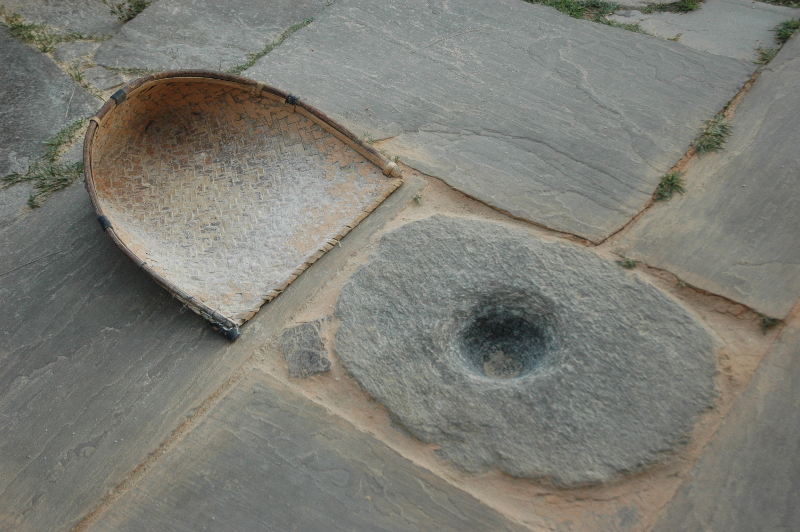
We employ local women from a village close to the Retreat for hand-pounding the rice. Two women work together as below:
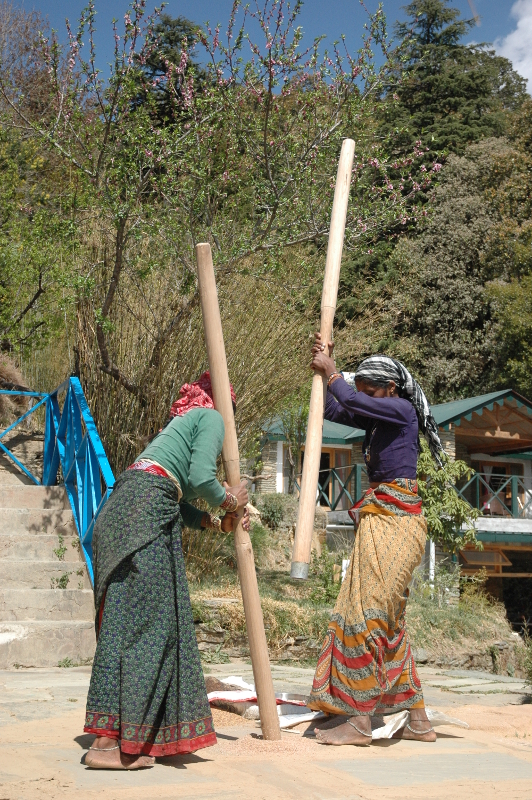
The threshed rice is then winnowed in a ‘soopa’. The lighter husk is carried by the wind while the heavier rice grain falls back into the ‘soopa’.
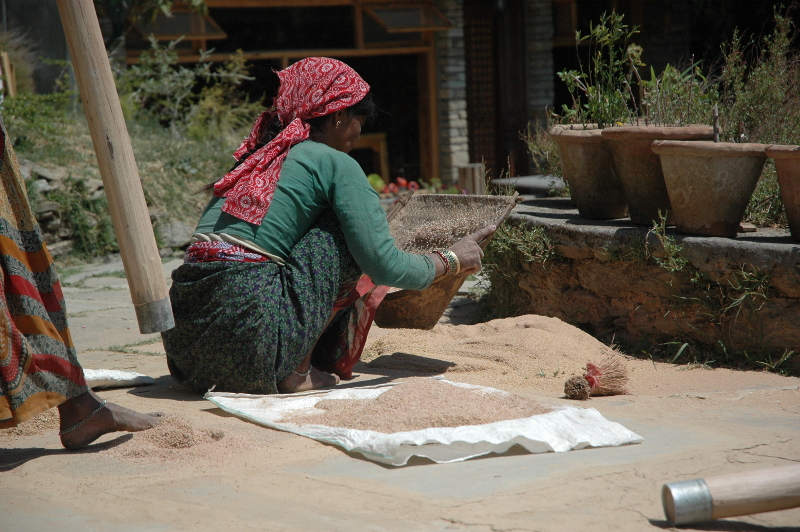
The rice grain that we now have is the whole grain (composed of bran, germ and endosperm ).
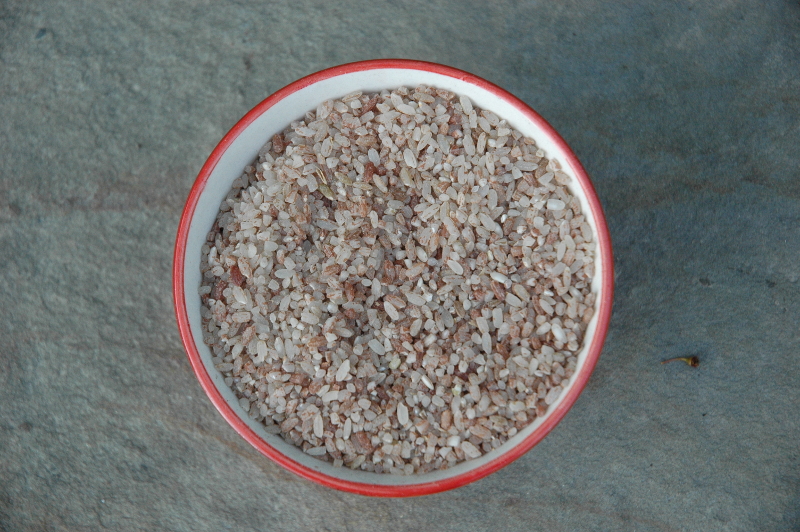
We don’t process the grain any further. Since we leave the bran and germ intact, the complete nutritional value of rice is retained in the cooked rice.
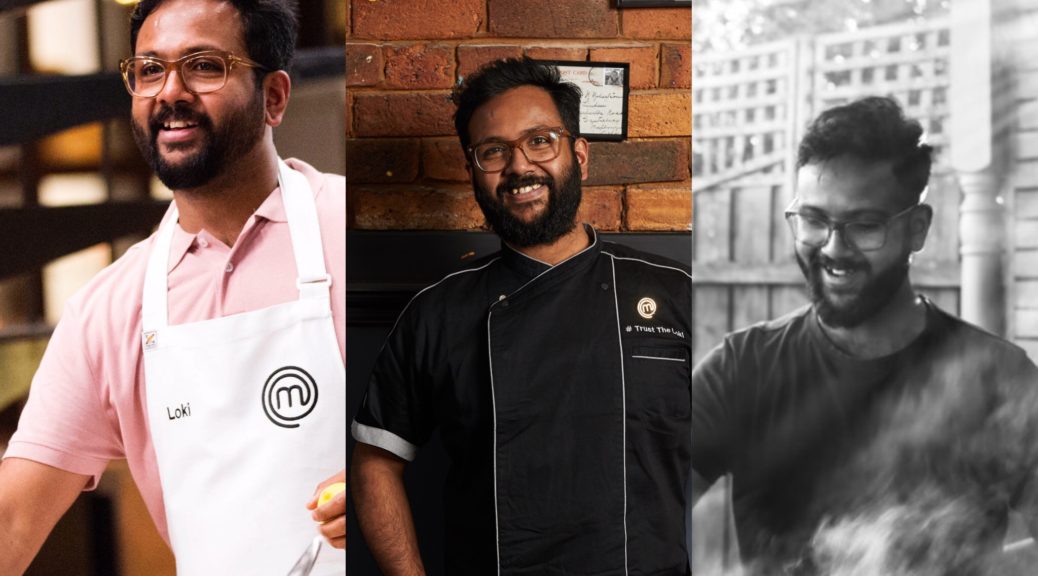

You must be logged in to post a comment.